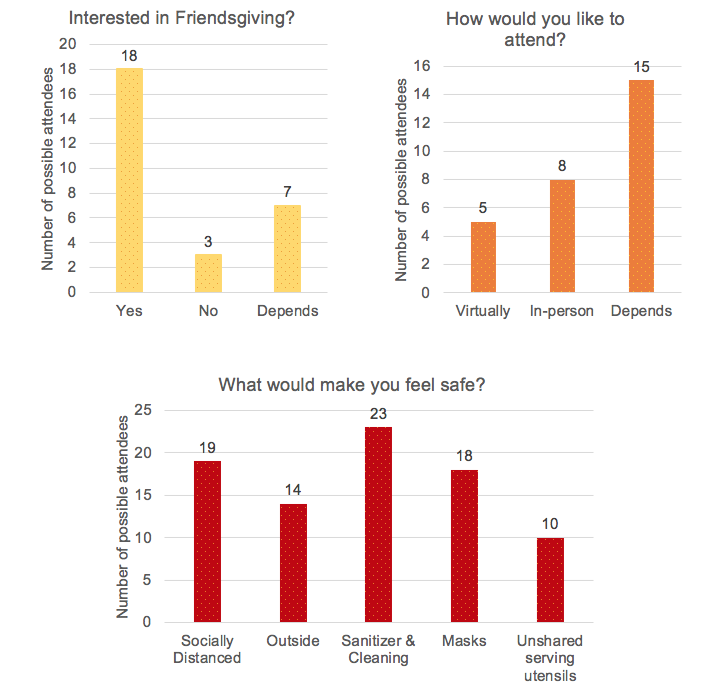t’s no secret; I’m a fan of Thanksgiving. For the past 5 years I have had the joy of hosting over 40 friends and family members for the annual “Friendsgiving” dinner feast. Thanks to my handy Friendsgiving dinner process map, it’s been a flawless delivery. However 2020 has brought challenges to this large gathering anI’m rethinking both how and what I am going to do for this year’s celebration. Luckily this is what I have been trained to do.
I’m bringing out my improvement methodology and avoiding solution jumping. So how can I still host a COVID-safe gathering rather than cancelling Friendsgiving?
Start with a SMART goal/problem statement
I’m creating a measurable SMART goal statement to give me a directional compass and an indicator of my project interventions:
Thanksgiving 2020 goal statement: Host a Friendsgiving gathering in November 2020 to for friends and family with 0% COVID spread.
(A problem statement is also a good idea.)
Analyze the situation
Baseline analysis and investigation tells us 1) what do our customers/patients/guests want, 2) if anyone else has done work on the problem(s), 3) where to focus our efforts (aka limited resources such as time).
#1: What do my guests want? What is the voice of the customer (VOC)? By starting first with the VOC, I know whether my efforts will be well received or in vain. I called up some friends and family that traditionally attend with three questions:
- Would you be interested in doing something for friendsgiving this year?
- How would you like to attend?
- What would make you feel safe/mitigate the risk of spread?
I listened to what they said and what they needed is to feel safe. I made some graphs to use in steps 2 and 3:

#2: What research have others done regarding gatherings? Luckily I can benchmark the event using the CDC guidelines and research from a ScienceFriday podcast that helped outline a potential plan.
#3: Where do I focus my efforts? Based on the benchmarking and the VOC, I’m going to direct my attention on how to develop my new Friendsgiving process. In my implementation, I will include the best practice guidelines and optional virtual gathering.
Formulate the plan
I need to take my findings and make a cohesive plan that I can execute. This will include a communication plan to the guests on what to expect and the roles they will play:
Friendsgiving Plan
- If community spread is over 20% or if mandate prohibits the gathering, it will switch completely to a virtual plan.
- The event will have two components: Virtual and in-person gatherings
|
NOTE: With infection rates currently above 20% in my area, I'm planning on a virtual-only event this year. I'm providing in-person options if it's different for you. One virtual event will occur: Preparation for the event:
Prior to the event:
During the event:
Two In-person events will occur: Prior to arrival:
During the event:
Meal prep:
|
Execute the plan
I haven’t executed the plan—yet. I’m sure there are going to be some last-minute changes and unexpected challenges, but we are a team. We will work together to reach our goal of having a safe and enjoyable meal together.
Here's wishing you and yours a safe and happy Thanksgiving this year!
Cindy Spangler
Why do some organizations thrive during a crisis while others flounder? Iona Thraen, director of patient safety, joined forces with her ARUP Laboratory colleagues to learn how the world-renowned national reference lab adapted to the pandemic. Leaders created a culture of safety by putting innovation, learning, and patient-centered care at the heart of all their efforts.
Setting goals is part of human nature, and the beginning of a new year always seems to accelerate it. Senior Value Engineer Cindy Spangler provides a framework for breaking down larger goals into smaller, more manageable steps so you’re set up for success.
Finding evidence to change the status quo isn’t easy; thinking about evidence in terms of how it persuades—whether subjective or objective—can make it easier. Plastic surgery resident Dino Maglić and his colleagues followed their guts and saved money by improving the laceration trays used to treat patients in the emergency department.
